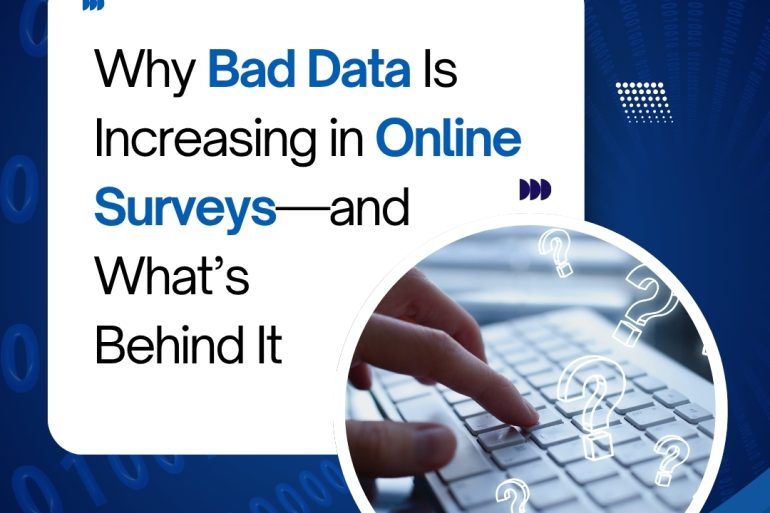Why Bad Data Is Increasing in Online Surveys and What’s Behind It

Data is the backbone of modern decision-making, but what happens when that data is flawed? Increasingly, researchers and brands are grappling with a rise in bad data coming from online surveys. Far from being a trivial issue, this shift can distort results and misguide critical business choices. So, what factors are fueling this troubling trend? Let’s break them down.
1. The rise of professional and inattentive respondents
The democratization of online surveys means anyone, anywhere, can participate. While this opens doors to more diverse perspectives, it also creates opportunities for “professional respondents” whose primary goal is to maximize incentives rather than provide thoughtful answers. Alongside them are inattentive respondents—participants who rush through surveys, skipping instructions or selecting random answers just to complete them quickly.
These behaviors introduce noise into datasets, leading to results that don’t reflect true attitudes or behaviors.
2. Overuse of incentives
Incentives have always been a powerful tool to boost participation rates. However, when the focus shifts too heavily toward rewards, it can inadvertently attract participants more interested in the payout than in providing genuine feedback. This imbalance can significantly skew data quality.
3. Survey fatigue and poorly designed questionnaires
As consumers are bombarded with survey invitations across apps, emails, and websites, survey fatigue becomes inevitable. Respondents may start surveys with good intentions but lose focus partway through, leading to careless or incomplete answers.
Moreover, surveys that are too long, repetitive, or confusing only worsen this issue. Even well-meaning participants can become disengaged when the survey experience itself is frustrating.
4. Bots and automated fraud
Advancements in automation and AI have given rise to bots capable of completing surveys at scale. While panel providers and survey platforms invest heavily in fraud detection, these systems must constantly adapt to evolving threats. When bots slip through, they contaminate datasets with synthetic responses.
5. Changing respondent behaviors and digital distractions
Today’s online environment is full of distractions: social media notifications, video ads, and instant messages compete for attention. Respondents often multitask, complete surveys on mobile devices, or pause and resume later. This fragmented participation increases the risk of inconsistent or incomplete answers.
What can researchers do?
While bad data can’t be eliminated entirely, it can be minimized with proactive measures:
Better survey design: Keep surveys concise, engaging, and user-friendly to maintain attention.
Robust quality checks: Use attention checks, open-ended responses, and response-time tracking to detect low-quality data.
Thoughtful incentives: Balance rewards to attract genuine participants rather than opportunists.
Advanced fraud detection: Continuously update tools and methods to identify and block bots or duplicate entries.
Targeted recruitment: Work with trusted panels and use precise targeting to reach participants who are truly relevant to the research.
Also read: Simplifying Surveys: A Guide to Improving Data Quality While Respecting Respondents’ Time
In conclusion
The increase in bad data is a complex challenge driven by evolving respondent behaviors, technological changes, and survey practices themselves. Understanding what’s behind this trend is the first step toward addressing it.